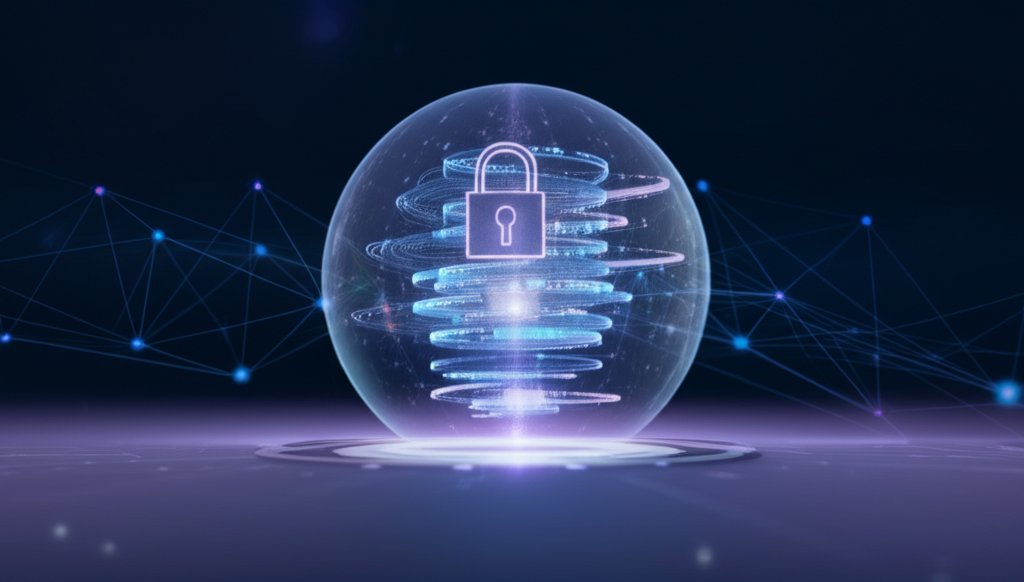We’ve all been exposed to the chilling news: devastating data breaches, customer information held hostage, business operations crippled by ransomware. For small businesses and individuals navigating the digital world, these aren’t just sensational headlines; they represent very real, very personal threats to your livelihood and privacy. It’s a common misconception that advanced cybersecurity is an exclusive domain for large corporations with boundless IT budgets. This couldn’t be further from the truth. Today, we’re going to demystify a powerful and accessible cybersecurity approach called Zero-Trust Identity, and I’m here to show you how you can absolutely leverage its principles to safeguard your most valuable digital assets.
Zero-Trust Identity isn’t about fostering paranoia; it’s about embracing a smart, proactive stance. It represents a fundamental shift in our security philosophy, moving decisively away from outdated models that inherently assume safety once you’ve breached an organization’s “perimeter.” Instead, Zero-Trust challenges and thoroughly verifies every single access request, ensuring that only authenticated users and compliant devices can reach specific resources. This article will break down what Zero-Trust Identity truly means, illuminate why it’s absolutely crucial for your data security in today’s threat landscape, and, most importantly, empower you with practical, actionable steps to start implementing its principles today, even without extensive technical expertise.
Table of Contents
- What is Zero-Trust Identity, explained simply?
- How does Zero-Trust differ from traditional security?
- Why is “Never Trust, Always Verify” important for my data?
- Is Zero-Trust Identity only for large corporations?
- What are the core principles of Zero-Trust Identity in practice?
- How does Multi-Factor Authentication (MFA) fit into Zero-Trust Identity?
- What is “Least Privilege” and how does it protect my organization’s data?
- Can Zero-Trust help secure remote work for small businesses?
- What are practical first steps for a small business to implement Zero-Trust Identity?
- How do device health checks contribute to Zero-Trust Identity?
- How does continuous monitoring enhance data security in a Zero-Trust model?
- What are the long-term benefits of adopting Zero-Trust Identity for an organization?
Basics
What is Zero-Trust Identity, explained simply?
Zero-Trust Identity is a modern security philosophy founded on one core premise: no user, device, or application should be automatically trusted, regardless of whether they are inside or outside your network perimeter. Instead, it demands that every single attempt to access data or resources is thoroughly verified and authorized before access is granted.
To put it in perspective, consider the traditional security model like a castle with a strong, high wall and a moat. Once you’ve successfully navigated the drawbridge and are “inside” the castle walls, you’re generally trusted to roam freely. Zero Trust, however, is more akin to a highly secure government building where you need a unique ID and specific clearance to enter every single room or even access a particular document, even if you’ve already passed through the main entrance. This explicit, continuous verification for every access request, with a heavy emphasis on who you are (your identity) and what device you’re using, is the essence of Zero-Trust Identity.
Small Business Example: Imagine you have a critical customer database. With Zero-Trust, even if an employee is logged into your office network, they still need their specific identity (username, password, and potentially a second factor) verified, and their device checked for health (up-to-date antivirus, no malware) every time they try to access that database. This prevents a hacker who might have compromised a single employee’s internal account from freely accessing all your sensitive data.
How does Zero-Trust differ from traditional security?
Zero-Trust fundamentally shifts from the traditional “trust but verify” perimeter-based security model to an unwavering “never Trust, always verify” approach. This transformation completely redefines how organizations protect their data. Traditional security often builds a robust outer defense, like that castle wall, operating on the assumption that everything and everyone inside that perimeter is inherently safe. This makes it incredibly vulnerable once an attacker manages to breach that single, strong outer layer.
In stark contrast, Zero-Trust operates under the assumption that a breach is inevitable, or perhaps already in progress. It treats every access request as if it originates from an untrusted network, regardless of the user’s physical location. It continuously verifies both the user’s identity and the health of their device, ensuring that even if an attacker gains an initial foothold, their ability to move freely within your systems (known as “lateral movement”) is severely restricted. This proactive, granular approach makes it exponentially harder for cybercriminals to navigate your systems, escalate privileges, and ultimately access or exfiltrate sensitive information once they’ve bypassed initial defenses.
Small Business Example: In a traditional setup, if an employee’s laptop gets infected with malware *inside* the office network, the malware might easily spread to other systems. With Zero-Trust, that same infected laptop, even if it’s “inside,” would be flagged as unhealthy, potentially denied access to critical servers, and isolated, preventing the malware from spreading.
Why is “Never Trust, Always Verify” important for my data?
The “Never Trust, Always Verify” mantra is not just a catchy phrase; it’s a critical philosophy for modern data protection because today’s threats no longer originate solely from outside your network. They can and often do come from compromised internal accounts, rogue employees, or infected devices that are already “inside” your perceived safe zone. Embracing the principle of “assume breach” forces you to build defenses that minimize damage, even if an attacker successfully gains a foothold.
By constantly verifying every user and device for every access request, you’re creating a dynamic, adaptable, and resilient security posture. This dramatically reduces the risk of an attacker moving laterally through your network to access sensitive data, even if they’ve stolen an employee’s password. It’s about protecting your data at every single interaction point, making it exponentially harder for cybercriminals to achieve their objectives. This proactive approach means you’re not just reacting to threats; you’re actively preventing them from escalating.
Small Business Example: Suppose a hacker steals an employee’s login credentials. In a traditional model, they might gain broad access. With “Never Trust, Always Verify,” even with valid credentials, the system would still prompt for multi-factor authentication, check the device’s security status, and only grant access to the specific resources that employee absolutely needs for their current task. This significantly limits what the hacker can do, even with stolen keys.
Is Zero-Trust Identity only for large corporations?
Absolutely not! This is one of the most persistent myths surrounding Zero-Trust. While often associated with the security strategies of large enterprises, the core principles of Zero-Trust are incredibly applicable, beneficial, and increasingly essential for small businesses and even individual users. Many foundational Zero-Trust concepts can be implemented incrementally and affordably, making robust data security accessible to virtually everyone, regardless of their budget or the size of their IT department.
For instance, implementing Multi-Factor Authentication (MFA) on all your accounts is a foundational, yet profoundly impactful, Zero-Trust step that any small business or individual can take today. Furthermore, popular cloud services like Microsoft 365, Google Workspace, and various accounting platforms now offer robust, built-in features that align directly with Zero-Trust principles – often at no additional cost. You don’t need a massive IT budget or a dedicated security team to start benefiting from stronger, more verified security practices. It’s about smart, incremental improvements that yield significant protective benefits.
Small Business Example: Setting up MFA on your company’s email and cloud storage (e.g., SharePoint, Google Drive) costs little to nothing but instantly adds a critical layer of Zero-Trust security. This simple step stops 99.9% of automated cyberattacks, preventing an attacker who has your password from logging in. It’s a prime example of Zero-Trust principles in action, accessible to everyone.
Intermediate
What are the core principles of Zero-Trust Identity in practice?
The core principles of Zero-Trust Identity revolve around explicit verification and strictly limited access, designed to create a resilient security posture. Let’s break them down:
- Verify Explicitly: This is the cornerstone. Always authenticate and authorize every access request, no exceptions. Every user, every device, every application must prove its trustworthiness every time it tries to connect to a resource.
- Use Least Privilege Access: Grant users only the minimum access rights needed for their specific tasks, and for the shortest possible duration. This principle, often called “Just-In-Time” (JIT) access, ensures that even if an account is compromised, the potential damage is severely contained.
- Assume Breach: Operate under the assumption that an attacker is already inside your network or will inevitably gain entry. Design your security infrastructure to contain potential threats, monitor for suspicious activity, and limit lateral movement from the outset.
- Microsegmentation: This involves dividing your network into small, isolated security segments, each with its own specific controls. This prevents attackers from easily moving between different areas of your network, even if they breach one segment. It’s like having separate, locked rooms within your secure building, rather than one large, open space.
Together, these principles create a robust, adaptive defense that protects your sensitive data by making every interaction accountable, continuously verified, and inherently more secure.
Small Business Example: If your marketing team needs access to the company’s social media management tool, they should only have access to that specific tool, not the accounting software. If a marketing account were compromised, the “least privilege” principle would prevent the hacker from touching financial data. This applies to individual folders, applications, and even specific data within an application.
How does Multi-Factor Authentication (MFA) fit into Zero-Trust Identity?
Multi-Factor Authentication (MFA) is not just a good idea; it’s a cornerstone of Zero-Trust Identity because it significantly strengthens the “verify explicitly” principle. Instead of relying on just a password (something you know), MFA requires at least two or more independent verification methods. These typically include something you have (like your smartphone receiving a code, or a hardware token) or something you are (like a fingerprint or facial scan).
By making it exponentially harder for attackers to impersonate a legitimate user, MFA ensures that the identity claiming access is genuinely who they say they are. Even if a cybercriminal steals a password, they’ll be stopped cold without the second factor. This continuous, strong identity verification is fundamental to Zero-Trust, ensuring that only truly authenticated individuals gain entry to your systems and sensitive data. It’s truly one of the easiest, most impactful, and most accessible Zero-Trust steps any small business or individual can take immediately.
Small Business Example: An employee logs into your cloud-based CRM. With MFA enabled, after entering their password, they receive a push notification on their phone to approve the login. If a hacker has their password but not their phone, the access attempt is immediately blocked, protecting your customer data. This simple step can prevent the vast majority of identity-based attacks.
What is “Least Privilege” and how does it protect my organization’s data?
The Principle of Least Privilege (PoLP) is a core Zero-Trust concept, meaning users (both human and non-human, like applications) are granted only the absolute minimum access rights necessary to perform their specific job functions – and nothing more. This isn’t about restricting productivity; it’s about minimizing risk.
For instance, if an employee’s role only requires them to view customer records, they should not have permission to delete those records, modify sensitive financial data, or access server configurations that are irrelevant to their daily tasks. The access they need is granted, but anything beyond that is explicitly denied. This approach dramatically limits the potential damage if an account is compromised. An attacker who gains access to a low-privilege account will find their ability to steal, corrupt, or disrupt sensitive data severely restricted. It’s like giving a temporary visitor to your office access only to the guest Wi-Fi and the meeting room, not the filing cabinets containing confidential client information. PoLP is a powerful defense mechanism that helps protect your data by containing potential breaches and preventing unauthorized access to critical information from escalating into a catastrophe.
Small Business Example: Your new intern needs to update client contact information in your database. You grant them access to that specific module, but they cannot access payroll records, sensitive contracts, or admin settings. If the intern’s account is ever compromised, the attacker is contained within a very limited scope, unable to cause widespread damage.
Can Zero-Trust help secure remote work for small businesses?
Absolutely! Zero-Trust Identity is exceptionally well-suited for securing the remote and hybrid work environments that have become the norm for many small businesses. Traditional security models often struggle with remote work because they fundamentally rely on a defined network perimeter; remote workers are, by definition, inherently “outside” that perimeter, making them more vulnerable.
Zero-Trust, with its “never Trust, always verify” approach, is entirely location-agnostic. It ensures that every remote user and every device is authenticated, authorized, and continuously validated for every single access request, regardless of where they are working from – be it home, a coffee shop, or a co-working space. This means your employees can securely access company resources, from cloud applications to internal file shares, knowing that your data remains protected through continuous verification and granular access controls. It provides a consistent security posture that adapts to the fluidity of modern work, giving you peace of mind.
Small Business Example: An employee working from home needs to access your company’s internal shared drive. With Zero-Trust, before access is granted, their identity is verified (via MFA), their laptop’s health is checked (antivirus running, OS updated), and only then are they granted access to the specific folders they need – not the entire drive. If their home network is compromised, your company data remains insulated.
Advanced
What are practical first steps for a small business to implement Zero-Trust Identity?
Implementing Zero-Trust Identity doesn’t have to be a daunting, all-at-once overhaul. You can begin with practical, manageable steps that significantly enhance your security posture immediately:
- Prioritize Multi-Factor Authentication (MFA) Everywhere: This is your single most impactful step. Enable MFA on every account possible: email, banking, cloud services (Microsoft 365, Google Workspace, QuickBooks), VPNs, and social media. This immediately strengthens your identity verification.
- Conduct an Access Audit and Implement Least Privilege: Review who has access to what data and applications. For every employee, ask: “Do they absolutely need this access to do their job?” Revoke any unnecessary permissions. This limits potential damage if an account is compromised.
- Secure and Update All Devices: Ensure all devices accessing company data (laptops, phones, tablets) are kept updated with the latest operating system and application patches. Install reputable antivirus/anti-malware software and ensure it’s active and performing regular scans. Consider mobile device management (MDM) for company-owned devices.
- Leverage Cloud Platform Security Features: Most cloud services you already use (Microsoft 365, Google Workspace, Dropbox Business) offer built-in security features that align with Zero-Trust principles. Explore options like conditional access policies, data loss prevention, and strong password policies within these platforms.
- Educate Your Team: Your employees are your first line of defense. Provide regular, accessible training on phishing awareness, strong password practices, and the importance of reporting suspicious activity. Empowering your team with knowledge significantly reduces human error-related risks.
Remember, every small step makes a significant difference in enhancing your security posture. If these steps feel overwhelming, consider consulting with a reputable managed IT service provider who specializes in small business cybersecurity.
How do device health checks contribute to Zero-Trust Identity?
Device health checks are a vital component of Zero-Trust Identity because they extend the “verify explicitly” principle beyond just the user’s identity to include the trustworthiness of the device itself. Before granting access to sensitive data or resources, Zero-Trust systems will thoroughly assess the security posture and compliance of the device attempting to connect.
This means verifying a range of factors: Does the device (whether it’s an employee’s laptop, a company-issued phone, or a server) have the latest security updates and patches installed? Is its antivirus software active and up-to-date? Are there any signs of malware infection? Is it configured according to your organization’s security policies (e.g., firewall enabled, disk encryption active)? If a device is deemed unhealthy or non-compliant, access can be denied, restricted to less sensitive resources, or automatically quarantined until the issue is resolved. This critical layer of protection prevents compromised or vulnerable devices from becoming easy entry points for attackers, adding an essential defense for your organization’s data.
Small Business Example: An employee attempts to access your accounting software from their personal laptop. The Zero-Trust system checks if the laptop’s operating system is updated and if its antivirus is active. If the OS is outdated or the antivirus is off, access to the sensitive accounting data is blocked until the device meets the security requirements. This prevents a personal device vulnerability from exposing company finances.
How does continuous monitoring enhance data security in a Zero-Trust model?
Continuous monitoring is absolutely essential to a robust Zero-Trust model because threats are dynamic, and a single, point-in-time verification isn’t enough to guarantee ongoing security. It means constantly observing and analyzing user behavior, device health, and network traffic for any anomalies or suspicious activities even after initial access has been granted. It’s a proactive watchfulness that never stops.
For example, if an employee’s account suddenly attempts to access an unusual database from a new, unexpected geographic location, or if a device that was previously deemed healthy suddenly shows signs of malware, continuous monitoring systems are designed to detect these deviations in real-time. This real-time intelligence allows for immediate, automated action, such as revoking access, isolating the suspicious device from the network, or alerting security personnel for further investigation. It transforms security from a static gateway into an active, adaptive defense system, making it incredibly difficult for attackers to operate unnoticed and protecting your data from evolving threats. It’s about building a security strategy you can Trust because it’s constantly vigilant.
Small Business Example: Your sales manager typically logs in during business hours from your office or home. Continuous monitoring detects their account trying to download your entire customer list at 2 AM from an IP address in a foreign country. The system immediately flags this as suspicious, blocks the download, and alerts you, preventing a potential data exfiltration.
What are the long-term benefits of adopting Zero-Trust Identity for an organization?
Adopting Zero-Trust Identity is more than just a quick fix; it’s a strategic investment that offers numerous profound long-term benefits beyond immediate threat mitigation, building a foundation for sustainable security:
- Significantly Reduced Risk of Data Breaches: By inherently limiting an attacker’s ability to move laterally and access sensitive data, Zero-Trust dramatically lowers the likelihood and impact of successful breaches.
- Enhanced Cost-Effectiveness: While there’s an initial investment, preventing breaches is far less expensive than recovering from one. This includes direct financial costs, legal fees, regulatory fines, and the invaluable cost of reputational damage. Zero-Trust pays dividends by avoiding these expenses.
- Stronger Compliance Posture: The granular controls and verifiable access logs inherent in Zero-Trust directly support compliance with data protection regulations like GDPR, HIPAA, and PCI DSS, making audits smoother and reducing the risk of non-compliance penalties.
- Greater Flexibility for Remote and Hybrid Work: Zero-Trust provides a secure, consistent framework that enables employees to work securely from any location, on any device, without compromising the integrity of your data.
- Improved Visibility and Control: You gain a much clearer understanding of who is accessing what, from where, and on what device. This enhanced visibility allows for quicker threat detection, more informed decision-making, and more efficient security operations.
- Future-Proofing Your Security: As the threat landscape evolves, Zero-Trust’s adaptable nature means your security infrastructure is better equipped to handle emerging threats, rather than relying on static, easily bypassed defenses.
It’s a proactive, resilient approach that truly strengthens the future security and operational resilience of your organization.
Further Exploration
As you embark on your Zero-Trust journey, you might have additional questions. Here are some related topics that can help deepen your understanding and guide your next steps:
- What is Identity and Access Management (IAM) and how does it relate to Zero-Trust?
- How can I assess my small business’s current cybersecurity posture?
- Are there free or low-cost tools to help me start with Zero-Trust principles?
- What should I do if my organization experiences a data breach?
- How does cloud security fit into a Zero-Trust Identity framework for SMBs?
Conclusion
Zero-Trust Identity is far more than just a cybersecurity buzzword; it is a critical, modern, and eminently practical approach to data security that empowers organizations of all sizes, especially small businesses, to effectively combat today’s sophisticated and persistent cyber threats. By embracing the unwavering principle of “never trust, always verify” and focusing on robust, continuous identity and device verification, you can build a resilient, adaptive defense that truly protects your most valuable asset: your data.
While the journey to full Zero-Trust implementation can be extensive and iterative, remember that every step you take, no matter how small, adds a significant, tangible layer of protection. Don’t wait for a devastating breach to happen before taking action. You have the power to empower yourself and your team with smarter, more proactive security practices. Begin today by ensuring Multi-Factor Authentication (MFA) is enabled on all critical accounts, reviewing who has access to your sensitive data, and committing to regular software updates. Protect your digital life, secure your business, and take control of your cybersecurity destiny now.









